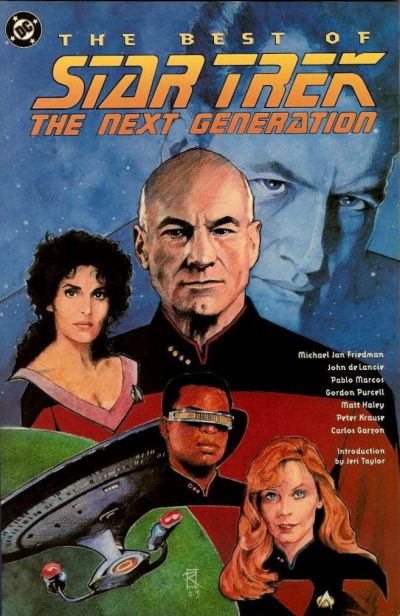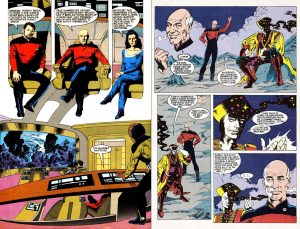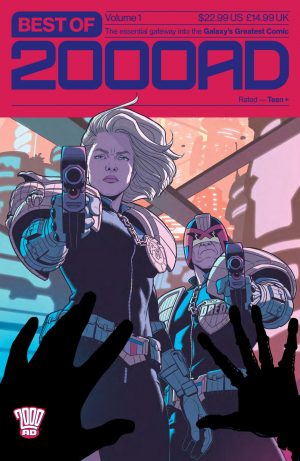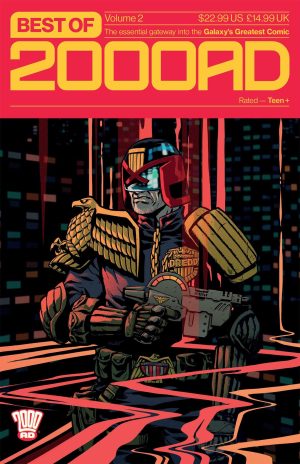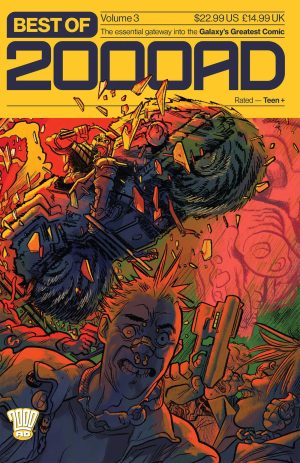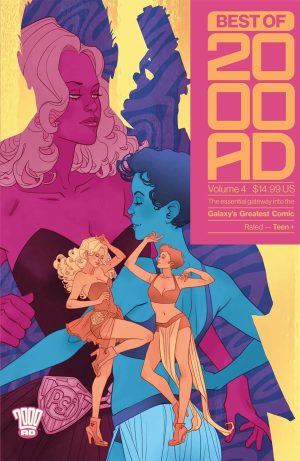Review by Ian Keogh
Graphic novels were still relatively rare when this 1994 collection provided a haphazard sampler, certainly not living up to the title in gathering stories from the Next Generation series DC had issued since 1989.
Michael Jan Friedman writes almost everything, and is admirable when it comes to ensuring his plots encompass a fair number of crew members each time. He begins with a tour around the entire crew as they interact with survivors from a colony ravaged by fatal illness. Those survivors shouldn’t be as fit and healthy as they are, and each seems concerned with forming a relationship with a crew member. The secret is novel, and the mystery well played out, but clumsy conversations toward the end undermine matters. Art from Pablo Marcos (sample left) is good when working from cast images, but stiff and unimaginative elsewhere. Moreso than what follows, it’s also affected by garish colours, not toned down from the original comics.
Peter Krause’s pencils are inked by Marcos on the following story, and his art looks better for not having the contrast between parts drawn freehand and parts tracing pictures. It means some likenesses aren’t quite exact, but as they’re consistent throughout that’s not greatly important in context. It seems for a long while to be the prelude to something bigger, but is eventually revealed as a character study, setting up a couple of interesting situations for that purpose. It may disappoint readers who prefer action and threats, and the Worf moment is dependent on knowing what was going on during the TV continuity.
‘The Gift’ is written by John deLancie, with Friedman only credited for additional dialogue. In places the wish is that he’d provided more, as deLancie’s script can sound clunky. He’s the actor who plays omnipotent trickster Q on the Next Generation TV show, so Q naturally features. He’s vindictive in wanting vengeance on Picard, and decides to interfere with his past. It’s never greatly convincing, and takes a wild swerve into an alternate universe, and is eventually a simplistic use of Q’s capabilities when so much more was possible. Gordon Purcell’s art (sample right) veers between ordinary and imaginative. IDW issued a facsimile edition of this in 2021.
Matt Haley’s layouts impress on the final story, but his people fall short in places. Friedman’s focus is on Will Riker’s concerns as an old friend is in danger. The parameters of the threat are well established, and flashbacks defining their past relationship have an emotional resonance. It drags on a little too long for the points being made, but anyone who enjoys Riker’s character should enjoy this.
While there are a few quibbles about the stories, by and large they stand up well, but the art is definitely that of a byegone era, being very staid and formalised, making what’s otherwise readable average.
